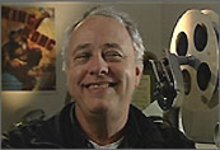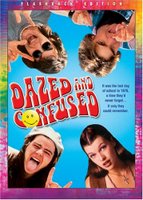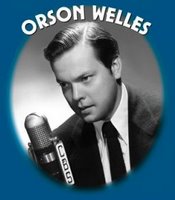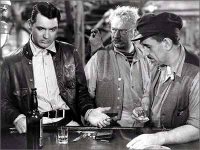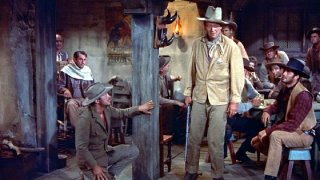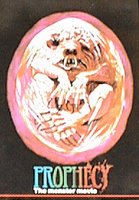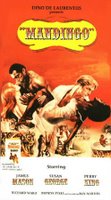
Well, another too-good-to-be-true Thanksgiving dinner later, courtesy of my wife’s increasing proficiency with all things turkey (including, I suppose, me), and here I am, sated, enjoying a second day in a row on a break from a intense two-week period of office work (which resumes again tomorrow), and exactly one month away from Christmas. It’s been a very bad week for blogging, thanks to that aforementioned pack mule-like workload, and as a result I’ve got a backlog of bits and pieces-- short ends, if you will (thanks, Brian, for reminding me of that bit of terminology—see
Hell on Frisco Bay, November 8)—that need tending to before we get too much closer to the end of the year.
First, the news:
EDELSTEIN MOVES TO NEW YORK Fishbowl NY reports that one of my favorite film critics, David Edelstein, who has spent the past several years as the resident film critic at
Slate, has decided to move across town to
New York magazine. He’ll take over the post once held by Peter Rainer and most recently Ken Tucker, who will apparently be returning to
Entertainment Weekly. Edelstein’s signing is expected to augur an upswing in
New York’s Internet interest—perhaps a more interactive Web site to accommodate Edelstein’s level of comfort and proficiency on the Net, and maybe even something more resembling a real blog than did that faux one, “Reel Time,” which Edelstein infrequently contributed to on
Slate. The biggest question for those of us infected by Edelstein’s year-end presence is the fate of the Movie Club, in which he gathered three or four fellow critics for a week-long series of postings rehashing the year in film, as well as the continuing relevance of film criticism and any other pet peeves and obsessions that surface during the week. It always makes for an addictive read, and I hope that, if Edelstein leaves his
Slate assignment at the end of the year, the Movie Club might be one of his final contributions. Of course, as long as we have access to his casually brilliant and unpretentious voice, to whatever .URL it is attached, and if, somehow, the Movie Club concept finds its way to
New York magazine’s Web site, then all truly will be well. I wish Edelstein a smooth move and hope that he finds the print magazine even more receptive to his talents than
Slate has. A spot on my sidebar awaits his arrival there.
DaveKehr.com And speaking of critics, blogs and sidebars, one of the best film critics around has an exceptionally enjoyable new site (available with one click, to your right, on my sidebar) that has fast become a daily must-read for me. Dave Kehr, who currently writes for the
New York Times, has created, with
Dave Kehr.com, the best venue for regular reading of his stuff since the days when he was a film critic for the
Chicago Reader. He’s been posting entries from the Torino Film Festival of late, as well as giving his readers a vivid insight into the ways in which film critics are plied and seduced by studio publicity departments. But hopefully Kehr will also take more of an opportunity to write full-length reviews whenever the muse strikes him. His enthusiasm for Harold Ramis’
The Ice Harvest (which opened Wednesday to decidedly more mixed reviews than Kehr’s positive take might have anticipated) single-handedly fueled my interest in seeing the film. Kehr’s site is very well-written and full of the kind of caustic observations that are often filtered out of family newspapers and other publications, for fear of offense or charges of lack of objectivity (a quality I personally find of little value in a film critic). And even though the site is fairly young, someone’s paying attention-- a quick glance at the names dropping comments on his site ought to be indication enough of that. And some of his observations re
The Ice Harvest were actually blurbed in the newspaper ads for the movie here in Los Angeles—the first time I can think of that a critic on a blog has ever been quoted in such a manner. Kehr’s site, like Kehr himself, is one of the good ones. If you’d like to catch up further on Kehr and his sensibility, this
interview, conducted by
Steve Erickson, ought to fill the bill nicely.
SOCAL DRIVE-IN MOVIE SOCIETY UPDATE 11/19/05 SoCal DIMS had its best turnout yet for signups and commiserating with drive-in aficionados at our table in the snack bar of the Mission Tiki Drive-in Saturday night, November 19. We’re finally building up a nice base of friendly folks who will head into 2006 with us as we look forward to some exciting times for drive-ins in Southern California. If you’re interested in getting on the Southern California Drive-in Movie Society mailing list, e-mail us at socalozoners@comcast.net and let us know if you have any special talents—proficiency with computers, art design, writing skills, whatever—that might be of special use to the club and its concerns.
Sal, Chris, Lanna and I met up with Jeff Thurman, manger/projectionist extraordinaire, and Frank Huttinger, De Anza’s film buyer, Saturday night for a great evening of planning, discussion, breeze shooting and, of course, movies under the stars. Well, I got in on all but that last part anyway—on the way out to the Mission Tiki, the radio in my car decided it was time to take a stand and not allow any volume adjusting beyond the very low level at which is was set at the time of its little short-circuit fit. So when I settled in for
Harry Potter and the Goblet of Fire I was somewhat disturbed to find out that I could barely hear the orchestral swelling over the opening credits. I decided to hang on as long as I could, but when I realize I couldn’t even suss out dialogue over the deafening sound of popcorn crunching coming from inside my own head, I decided to pack it in and head home. (The 10:30 show started closer to 11:00 anyway, which meant that I would have started the trek home at 2:00 am—that
Harry IV is lo-o-o-o-ong—much too late for a tired, cranky boy like me.) I pledged to try
Harry at the Mission Tiki again, only this time I’ll have gotten some sleep the few nights before!
CATCHING UP: MY NETFLIX DOUBLE FEATURE Here are the two movies I’ve managed to catch at home via Netflix in the past month: Michelangelo Antonioni’s
Blow-up and Don Mancini’s
Seed of Chucky. Any guesses as to which one I enjoyed more?

I’m in the midst of an e-mail debate with the Mysterious Adrian Betamax over the merits of the Antonioni movie, which I found to be Alienation Cinema’s equivalent to a Cecil B. DeMille biblical epic—let’s dance around and frug and fret with the denizens of swinging 1960s-era London and secretly dig all the
happenings that we’ll constantly insist, through our visual grammar and sound design, are symptoms of the sick soul of society. (The zombified supermodels David Hemmings makes a living taking pictures of didn’t look like they were having
that bad of a time.) And to top it off, Antonioni is so distanced—coolly, deliberately—from his subjects and their world that the movie comes off as being one of those muted, nebulous templates for whatever concerns and/or meanings the viewer wishes to project upon it. And to top it off, the movie begins and ends with mimes running madly about London and engaging in a tennis game with no net, no rackets and, of course, no balls. I’ve nothing against ennui, but please, let it feel more felt (or would that be authentically numbed), less trendy and manufactured than what Antonioni concocts for
Blow-up.
On the other hand,
Seed of Chucky is easily the best Chucky movie ever made. Which is, granted, not saying much, as there hadn’t been a good Chucky movie before this one’s release. The Chucky phenomenon has long since ceased pretending to have its roots in horror—no, these movies, particularly the unfortunate
Bride of Chucky, the Ronny Yu-directed previous entry that introduced Jennifer Tilly to the series, succumbed rather whole hog to the jokiness of the previous three films and collapsed into a series of bad taste set pieces.
But
Seed turns out to be worth a look, not because it’s any better as a horror film than any of the others, but because it’s a terrific showcase for Tilly, who appeared briefly as Tiffany in
Bride before having her soul transmorphed into the murderous Tiffany doll who will turn out to be Chucky’s romantic companion. In
Seed, Tilly still provides the voice for Tiffany, but also plays herself, Jennifer Tilly, working actress, sex bomb, stuck on the set of a cheapjack Chucky horror film, who ends up the target of Chucky and Tiffany’s sinister in vitro fertilization plans. Tilly plays a breathtakingly funny version of herself that is as no-holds-barred a parody of Hollywood ambition and backstabbing as I’ve ever seen. In fact, I’ve never seen an actor be so fearless in dismantling their own persona as an actor as Tilly is here.

She raises the Good Sport standard to new heights, even to the point of undermining her own abilities as an actress (something she does with admirable tongue-in-cheek, and not just a little dash of honest insecurity, in a production diary that appears as a bonus feature on the DVD) and playing up her brazen sexuality when she knows it might get her ahead. Her performance is a witty, funny critique of what passes for talent in modern-era Hollywood, and only someone as confident in her abilities as a comedian and, yes, as a serious actress, would even try to walk the line she skates along with the greatest of ease in
Seed of Chucky. I wish Academy Awards were given out for this kind of truly brave performance instead of the kind of Charlize Theron-Halle Berry faux-ennobling stunt work that seems to have taken over the voters’ sensibilities. But then, most voters would rather you thought they watched films like
Monster or
North Country (or
Blow-up) than films like
Seed of Chucky, and saluting Jennifer Tilly would just send the wrong message, wouldn’t it?
CATCHING UP: HEY, I WENT TO A MOVIE THIS WEEKEND! Something strange happened this weekend. Not only did I get a chance to take a breath and engage in some non-work-related activities (a very rare indulgence in these heady, unbelievably busy days), I actually caught a couple of movies
at actual indoor theaters. In the shadow of my renewed interest in drive-ins, I’ve seen a grand total of three movies at “traditional” cinemas since September--
2046, A History of Violence and
Wallace & Gromit and the Curse of the Were-rabbit. Indulging in the ambience of frequently obnoxious crowds, excessive “pre-show entertainment” and beyond excessive ticket prices (a ten-spot just to walk in the door anywhere in Burbank) isn’t something I’ve particularly missed, although it’s hard to match a properly projected wide-screen presentation at a well-tended hardtop. And once the opportunity arose to head out on Thanksgiving Day with my father-in-law to see
Walk the Line, out the door we went. I hadn’t even been particularly looking forward to seeing the Johnny Cash biopic, mainly because biopics in general have become less and less interesting to me in quite the inverse to their rise in popularity.

Whether it’s the general conservatism of the form, which doesn’t usually encourage directors to take many narrative or stylistic chances, or just the familiar arc of so many warts-and-all celebrity stories that are chosen to be filmed (rise from poverty/obscurity, obsession with family disaster, rise to fame, fall from grace, redemption—at the hands of either art or the love of a good woman/man), I just don’t find biopics all that interesting. Even
Ray was overlong and too indulgent with its subject. But Jamie Foxx’s supreme act of mimcry seems to have raised the bar on expectations for actors taking on the task of bringing to cinematic life these familiar public figures, and if that comparison fools anyone into thinking less of what Joaquin Phoenix and Reese Witherspoon have done as Johnny Cash and June Carter, then more’s the pity.
Walk the Line is every bit as good a movie as
Ray-- better, in fact—but Phoenix in particular succeeds in creating a believable character and a convincing physical presence on screen as Cash even though he's not close to a physical match for the Man in Black.
And Phoenix does his own singing, whereas Foxx lip-synched all those Ray Charles hits. Witherspoon resembles June Carter even less, but she’s a sassy, spirited delight, and—here’s the trump card—she turns out to be every bit the clever comedienne Carter was, and twice the singer.
Line is directed with a less-than-
Heavy hand by James Mangold-- it’s a solid work of Hollywood craftsmanship, and I don’t mean that to be in any way a denigration of its worth, especially in a season full of cynical Oscar bait and tired retreads of ideas that were already
tired before they were
retreaded. Mangold’s movie doesn’t pander to its audience, congratulate it for having too much knowledge of Cash’s life (except, maybe, for when Carter shouts at the drunken singer that she refuses to “walk the line” for him), or gloss over the ugly parts in order to paint a rose-colored picture of an American icon who was anything but rose-colored. It’s an honorable portrayal that has the distinct aura of honesty about it, and it’s a very entertaining one as well.
I wish I could say the same about the movie I saw this afternoon. The girls and I finally caved in to the Disney marketing machine and saw
Chicken Little, which has gotten some pretty caustic notices for a bit of kids animation, most of which center around how misbegotten Disney’s standards have become if they’re forsaking traditional 2-D animation for something like this. And the complaints turn out to be well-founded: Disney has apparently completely bought into the idea that it’s 3-D computer animation that’s dragging people through the turnstiles, when anyone who’s seen even one Pixar movie could tell you that it’s that company’s strong sense of storytelling that holds primary importance for that brand. But
Chicken Little, which could easily be subtitled
What Shrek Hath Wrought settles for anachronistic pop culture references (why C.L. and his buddies are so obsessed with bad ‘80s pop music is something that only the demographic geniuses at Disney would have even a clue about) and a relentlessly frantic pace to sell its stale comic set pieces and ugly stereotypes. Sipping at the P.C. trough for platitudes about acceptance and just being who you are can’t hide some pretty mean digs at ugly folks, fat folks and, yes, gay folks, and the fact that the butts of these jokes are anthropomorphized farm animals doesn’t lessen the sting—what’s the point of making a ridiculous pig a fan of Barbara Streisand and show tunes for the sake of a pointless and mean throwaway gag?
 Chicken Little
Chicken Little is well-designed and nice to look at, and it’s not painfully boring for an adult to sit through, unlike this year’s earlier exercise in narrative rigor mortis,
Robots. But it is far more spastic and unvaried in tone and pace, and thus even more exhausting. Even more disheartening was the lineup of trailers attached to this movie, three of which were further ugly bits of animation in the knowingly hip
Shrek vein—an desperate-looking take off on the Little Red Riding Hood myth from the Weinstein Company called
Hoodwinked; a
Madagascar rip-off about a bunch of woodland creatures being encroached upon by sprawling suburbia who invade a rural house for its bounty of food called
Over the Hedge; and another
very tired-looking
Madagascar clone called
Open Season, all about a pet grizzly bear dragged into the wilderness by his buddy, a buck deer, who finds out nature won’t pamper him the way he’s become used to at home (the tagline: Boyz ‘n the Wood!) If that lineup isn’t enough to get you despairing about the future of Hollywood animation, nothing will. The one trailer we saw that actually looked like it might be something I wouldn’t be embarrassed to take my girls to see was the new
Curious George feature. It’s been relegated to the frozen tundra days of February, something which may or may not have anything to do with the fact that it is that rarity of rarities these days, a traditional hand-drawn cartoon. And I may just go see it, bad reviews or not, just to throw my dollars behind a style that most of the myopics in Hollywood have decided is passé, something I will not be doing any longer for CGI animated features like
Chicken Little.
CATCHING UP: THE BIG WISH LIST Had I been left to my own devices this weekend, I probably would have opted for any one of the following titles instead, all of which are on my ever-increasing list of must-sees (until I wait too long, of course, and they become automatic additions to my Netflix queue:
Pride and Prejudice,
Good Night and Good Luck,
Zathura,
The Squid and the Whale,
Kiss Kiss Bang Bang,
The Legend of Zorro,
Capote,
Syriana or
Paradise Now.

But the three I want to see most are the three that stand the greatest chance of disappearing altogether in the landslide caused by the big studios looking to secure screens on which to exhibit their seasonal Oscar bait. Kiyoshi Kurosawa’s
Pulse looks to restore some of the horror to the tarnished J-horror genre, which has been dulled by too much familiarity, repetition and Hollywood appropriation (
The Grudge, The Ring), and if it’s half as frightening as the director’s earlier nightmare vision,
Cure, then it stands to be the best J-horror contribution to our collective goose pimplage in about ten years, even though it’s been sitting on Miramax’s shelf since 2001.

Then there’s Sarah Silverman’s reportedly hilarious comedy concert documentary entitled
Jesus Is Magic, which promises to top even her brilliant and disquieting segment in this past summer’s analytical comic doc
The Aristocrats. There she spun the titular joke off into a deadpan riff on sexual abuse in show business that ended with her claim of rape at the hands of TV talk show host Joe Franklin. The very title of the new movie, if turned into an acronym, gives you some hint of the raging id of Silverman's clueless Jewish-American princess persona.
JISM promises to take even further the envelope-stretching skewering of subject matter even the most emboldened comics are hesitant to approach.
Finally, starting tonight at the Nuart in Los Angeles, a rare opportunity to see Bernardo Bertolucci’s influential 1970 classic
The Conformist on the big screen. I just re-encountered Bertolucci’s
La Luna last week, after having not seen it since its original release in 1979, and it wasn’t as bad as I recalled.

There are sequences in it that are shocking (though its incestuous encounter is not really one of them—by that time the movie has become rather silly) in their cinematic and lyric immediacy. Though I am far less impressed with Jill Clayburgh in 2005 than I was back in her heyday, of which
La Luna pretty much marked the beginning of the end, the movie has much more power, no thanks to the obviousness of its Freudian frights, than I remember in first seeing it, when I was, perhaps significantly, a lot closer to the age of its Oedipally confused, heroin-addicted teenage protagonist than I am now. But seeing
La Luna again really made my mouth water at the possibility of taking in
The Conformist on the big screen, a movie made entirely of the kind of lyric intensity and ravishing beauty that graced
La Luna only intermittently. This is as close to a knock-down-the-door, race-across-town-to-the-westside must-see as I can imagine.
NOTES ON STUFF UPCOMING I’ve been lax in reporting on the second “Heroic Grace” series of martial arts films now underway at UCLA Film and Television Archive, but it’s my pleasure to provide this
link to a rather comprehensive article by Mark Pollard at Kung Fu Cinema.com that details the entire schedule with some pretty good tips on which ones not to miss. The Mysterious Adrian Betamax, an Asian film buff of some repute, says this series isn’t quite as captivating on the whole as the previous one, but says it’s worth looking into if you’ve any love for the great Shaw Brothers-era kung fu classics of King Hu, Chang Cheh and Chung Chang-wha (the restored version of the director’s renowned
King Boxer, released in the U.S. as
Five Fingers of Death, played on November 17—again, I apologize for not being quicker on the draw here). There are still plenty of reasons on the schedule to get excited that haven’t come around yet, including Chang Cheh’s
The New One-Armed Swordsman (1976; Saturday, November 26), Chang Cheh and Bao Xueli’s
The Boxer from Shantung (1972; Saturday, December 3), Lau Kar-leung’s
Legendary Weapons of China (1982; also Saturday, December 3), and Chang Cheh’s
The Five Venoms (1978; Saturday, December 11).
I could probably wait until late December for the official release of
Memoirs of a Geisha were it not for the fact that the
American Cinematheque is screening it at the beautiful Aero Theater in Santa Monica on December 5.

Any excuse to attend the Aero is worth considering, but then there’s the little matter of Ziyi Zhang attending this screening for a Q and A afterward. I see…! Not since the transcendent appearance of Michelle Yeoh at the Los Angeles Comic Book Convention in 1998 have I actually considered going out of my way to set eyes on a transcendent Asian beauty of the cinema, and with my wife’s approval, no less! Hey, Mysterious Adrian Betamax, wanna go?

*** I’ve always imagined that there could be no better gritty ‘70s double feature, no better portrait of Abe Beame-era New York City in mid-collapse than a pairing of
The Taking of Pelham 1-2-3 and
Dog Day Afternoon. And now the New Beverly Cinema is making my dream come true December 4-6. Merry Christmas!
If you’re like me, you have a soft spot for any movie that wears its exploitation roots on its sleeve. That doesn’t mean the movie is necessarily going to be any good. It’s just that in these days of overinflated Hollywood salaries, egos and budgets, any lack of pretense is to be welcomed, if not outright applauded. So when I heard about the upcoming Samuel L. Jackson thriller
Snakes on a Plane (can you guess the basic plot outline?)

I laughed, rolled my eyes, thought “What’s next?” and shelved any real intention of ever seeing it. Then I looked the movie up on IMDb and discovered that it is being directed by David R. Ellis, stunt coordinator-turned-action auteur behind two of my favorite thrillers of the past 10 years,
Final Destination 2 and
Cellular, and suddenly
Snakes on a Plane went straight to the top of my must-see list for 2006. And apparently others are obsessed with the imminent arrival of this particular flight, as this note from
Cinematical will attest. Bring on the boas! Prep the pythons! Round up the rattlers!
FINALLY, BELATED THANKS ON A HOLIDAY PAST Even though I’m a day too late, I must not let the Thanksgiving holiday go by without expressing my thanks for:
* My Dear Wife, who indulges and understands my irrational desire to work on this blog even when it means I’m not gonna get enough sleep—I love you more and more each day.
* My Daughters, who couldn’t be more wonderful, who surprise me each day with their capacity for love, empathy and understanding—I’d rather spend time with you guys that almost anyone else.
* My Best Friend, Blaaagh, who can make even a routine, uneventful afternoon seem like gold—Let’s go nuts and get together, oh, I don’t know,
three times in 2006, okay?!
* The Friends of
SLIFR who make writing this blog a true joy, and who make writing comments even more joyful—you know who you are, but in case you don’t, I’m talking about Blaaagh, Thom McGregor, Virgil Hilts, The Mysterious Adrian Betamax, Peet, PSaga, Murray, Robert (thanks for the great Netflix suggestions--
Blue Sunshine is on its way, and I'm gonna settle in for a screening of
Night of the Lepus as soon as I post this), Machine Gun McCain, Brian, Roscoe, 8763 Wonderland, Sharon, Jen, Rachel, Caption Jockey, Jonas, Beege, Craig Phillips, David Hudson, Jeff, Frank, Sal, Kathy, Lanna, Kyle, Dave Robidenza, Birdman, and several others I’m probably forgetting.
* My coworkers, who have made a difficult year more bearable—Some of you who left are coming back, and we’ve got some terrific new leadership, all of which makes me look at 2006 in a much brighter light.
* I don’t have a lot to be thankful for regarding the Dodgers in 2005, but I am grateful that at least there is a new GM in place and that assistant general manager Kim Ng will be around next year. Surprise me in 2006, won’t you, Blue?
* And I’m also thankful to anyone who endeavors to make a good movie in this modern era. It is an endeavor that is way harder than it looks, and when anything even remotely sturdy and original, not to even mention transcendent, comes out of Hollywood, there’s reason to be thankful indeed. 2005 has given us some reasons, if even Hollywood is finally staring down a deconstruction of their age-old paradigm of audience attendance. May the studios truly learn the lesson that if it’s worth it-- if the movies are well-told, well-made and respectful of that audience—they will come.
















































